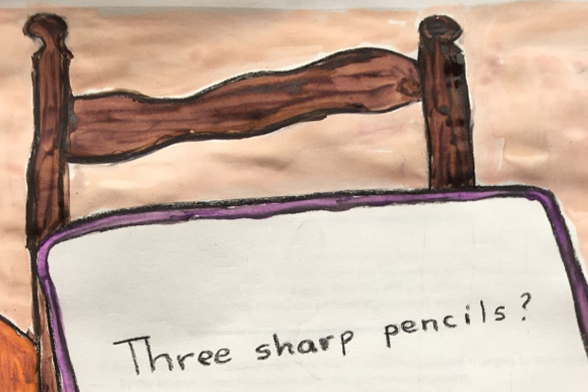 Alan Turing was a British mathematician and logician. In the first half of the 20th century, he articulated a conceptual framework surrounding so-called “mechanical thinking devices”. His ideas were entirely theoretical because no such devices existed. Even so, many of his ideas remain at the foundation of theories of computation and the field of computer science.
Alan Turing was a British mathematician and logician. In the first half of the 20th century, he articulated a conceptual framework surrounding so-called “mechanical thinking devices”. His ideas were entirely theoretical because no such devices existed. Even so, many of his ideas remain at the foundation of theories of computation and the field of computer science.
One question Turing thought about was: Are there circumstances under which a computing machine could be said to think? This led to the formulation of an idea which has come to be known as the Turing Test. If, in every “conversation,” the machine responds in the same way as a human would, we can say that the machine mimics the activity of human thought.
Turing published this idea in 1950, a time when cognitive scientists were confident that language was a capacity unique to humans. The computers envisioned at that time—which would soon be built—were devices that accepted written inputs and returned written outputs. And so it happened that in the 1960s and 70s, the field of artificial intelligence abounded with computers programmed to narrate, and converse.
Such computers would be stuffed with a big detailed vocabulary, a lot of grammar, and information about idioms and metaphor such as, hit the lights, and love is a rose. Each generation of them got better and better, but sooner or later the machines always flubbed up and flunked the Turing Test. At first the promising machine might answer complex questions and tell original stories, maybe even try to lie. But then it would invite some children down to the meadow to play in the thistles or ask someone if they’d like to exchange heads for the afternoon.
For a long time, computing machines flunked the Turing Test hands down. It just wasn’t hard to make the machine give away its machine-ness. Things are little different now.
Have you ever had an unhappy customer service interaction, full of— press 8 to return to the main menu… please re-enter the last four digits… your password has expired… I’m sorry that is not a valid response… You eject yourself from the labyrinth of menus and wait out the minutes and the muzak until you reach a customer service representative who hopes you have a satisfying experience today and who turns out to be as circularly obstinate as the robotic voices you just ran away from. Out of frustration, you ask, “Are you a person or a machine?” They respond indignantly that they are a person. Then you know. That’s exactly what a machine would say.
In that case, you’d be the one administering the Turing Test.
How do you make sure you are interacting with a human? What question can you ask that only a human could answer?
Chances are you’ve taken the Turing Test many times. When you try to send a message or a comment online, you must first get past the window that displays smeared smudges and asks you to type the letters that you see. They are trying to filter out spam. Nobody wants to be flooded with the mail that comes from machines.
Of course, if you can’t figure out what those gloppy letters are, the machine thinks you are a machine and you flunk the Turing Test. They won’t be dealing with any mail that comes from you. Or rather, the machine that handles the mail won’t be dealing any mail that comes from you. Because that machine thinks you’re a machine.
But you’re not a machine. By flunking the Turing Test, you were merely impersonating one.





